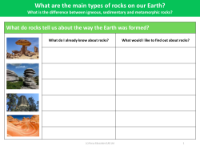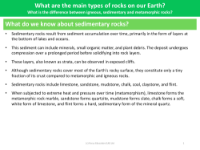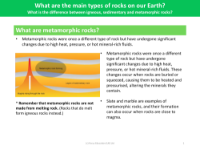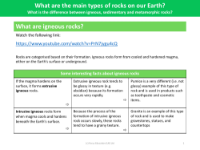What is the difference between igneous, sedimentary and metamorphic rocks? - Presentation
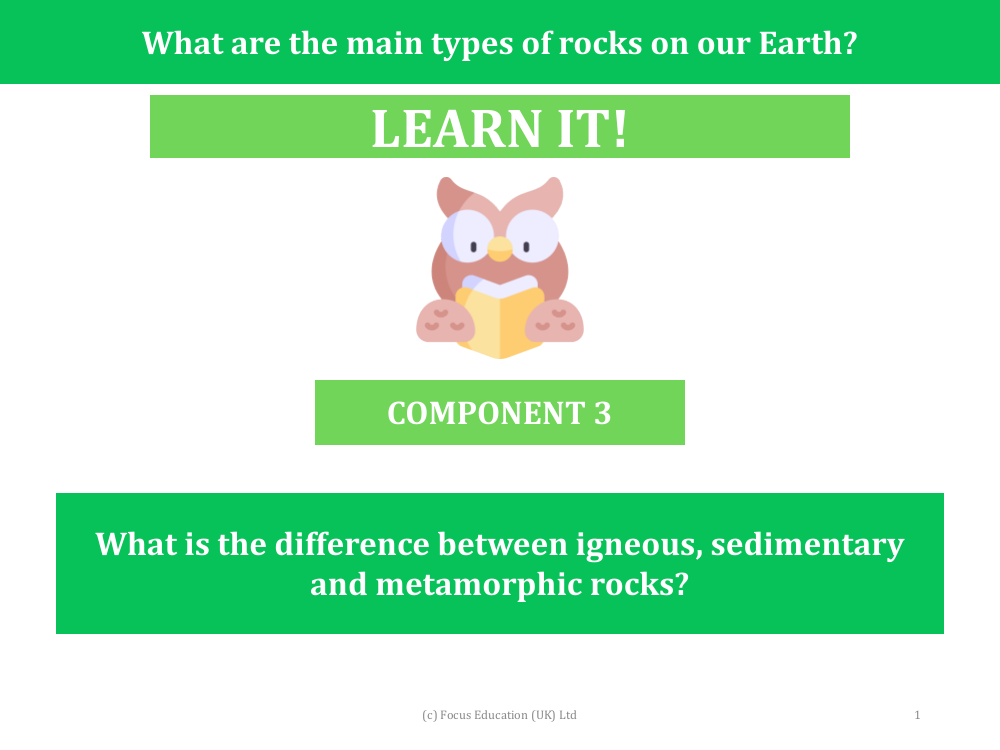
Science Resource Description
Igneous, sedimentary, and metamorphic rocks are the three primary types of rocks that make up the Earth's crust, each formed through different geological processes. Igneous rocks originate from the cooling and hardening of magma, which can occur either on the Earth's surface, forming extrusive rocks like obsidian with a glassy texture, or beneath the surface, creating intrusive rocks like granite with a grainy texture. Sedimentary rocks, on the other hand, are formed from the accumulation of sediment such as minerals, organic matter, and plant debris, which over time becomes compressed and solidifies into layers, often visible in cliffs. Common examples include limestone, sandstone, and coal.
Metamorphic rocks were once igneous or sedimentary rocks that have undergone transformation due to extreme heat, pressure, or the influence of mineral-rich fluids, without melting. This process alters their mineral composition and structure, resulting in rocks such as slate and marble. It's important to note that metamorphic rocks do not form from molten rock; that pathway leads to the creation of igneous rocks. The study of these rock types provides valuable insights into the Earth's formation and the dynamic processes that shape our planet.



